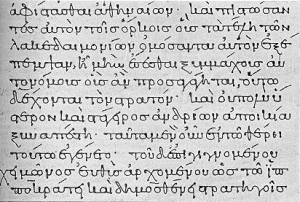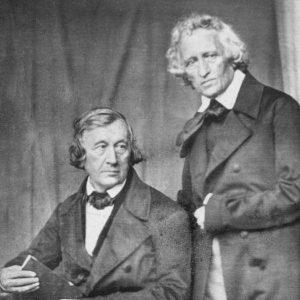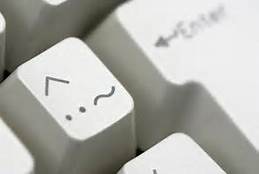Have you ever seen German words with two dots over some of the letters? Are they really necessary or do they just make a heavy-metal band name look cool, like Mötley Crüe and Motörhead? It’s doubtful these bäd böys actually knew whät they were döing when ädding ümläüts tö their bänd nämes. Umlauts do, indeed, change a word’s pronunciation. Before hearing the sounds these little dots make, let’s look at the origins of the humble umlaut.

Before an Umlaut Was an Umlaut
The umlaut’s origins are Greek. As early as 323 B.C., the umlaut—called a trema—was used primarily at the beginning of a vowel, separating it from a preceding vowel, in order to show the next word. This was because there were not yet spaces in between words. The umlaut also showed that a particular vowel formed its own syllable. Alexander the Great most certainly used umlauts!

Taking Shape
Fast forward 1,300 years or so to Middle High German. Here, we find the umlaut represented as a tiny “e” above the affected vowel or in regular size right after it.
The Final Product

In German handwriting that emerged after the Middle Ages, the tiny “e” over the vowel was composed of two short vertical lines very close together, and the superscript “e” looked like two little strokes. From the 16th century, the handwritten convention of signifying the umlaut by two dots placed above the vowel is also found in printed texts. This time period gives us the version of the umlaut that we know and love today!

Once Upon a Time….
The German word “umlaut” was so named by the eldest Grimm brother—of fairytale fame—Jacob. It literally means “around (um) sound (Laut)” and describes the process of sound-change where a vowel’s sound is influenced by another vowel that follows it in the same word. For example, the plural of “Hant” (“hand”) in High German was “Hanti,” but the “i” ending influenced the pronunciation of the previous vowel “a”. So, “Hanti” became “Henti”. Eventually, the “i” was dropped. So, in German today we have “Hand” and the plural “Hände”.
How Are Umlaut Letters Pronounced?
The letter ä is pronounced like “eh”.
The ö is similar to the sound in “earn” or “bird”.
The letter ü is the most difficult for those who are learning German. It is the same sound as the u in the French words “musique”, “rue”, etc. (If you don’t know how to pronounce French words, you can always take French at Excelsior Classes, after taking German, of course….)
Do umlauts exist in other languages? Yes, but they are often pronounced differently and are not to be confused with accent marks (like in French or Spanish). Umlauts in German stand alone as totally independent letters.
Which German Words Use Umlauts?
Umlauts are used in various parts of speech in German: nouns (not only, but often in the plural form), verbs, adjectives, adverbs, prefixes, and prepositions.
Ä: Äpfel (apples), Hände (hands), wärmen (to warm)
Ö: nötig (necessary), Köln (city of Cologne), mögen (to like)
Ü: über (over, about), kühl (cool), wünschen (to wish)
Typing Umlauts in the Old Days
When I was studying German in college—yes, before word processors—we students had to type our German papers without umlauts, for the simple reason that there were no umlaut keys on our American typewriters. But, thanks to the tiny “e” from Middle High German that could also be written in regular size after the vowel, we were able to type correct German! So, for example, “Äpfel” became “Aepfel”. This rule still holds true.
Pronouncing an Umlaut Letter….eek!
Umlauts are nothing to be feared. Usually, after the first couple weeks of German I, students have the pronunciations down pat. Click here to try your hand at pronouncing them.

How Do I Type an Umlaut on My Computer?
If you use a PC and don’t have umlaut keys, umlaut letters can be created using the following alt codes:
Ä – alt + 0196
Ö – alt + 0214
Ü – alt + 0220
ä – alt + 0228
ö – alt + 0246
ü – alt + 0252
Make sure you’re using the number pad to the right of your keyboard, not the numbers that run along the top. If you are of the Mac persuasion, press and hold down “Option” as you type the letter. This will create the letter with the umlaut.
Even though the actual pronunciation of Mötley Crüe and Motörhead would make these old rockers laugh—I’m sure someone has told them by now—they can be assured of this: their names wouldn’t be half as cool without the umlauts….
Come and experience the “joy of umlauts” by taking German at Excelsior Classes!
Sources:
Urban Dictionary
Howcast.com
Wikipedia
Babbel.com
Answers.com










